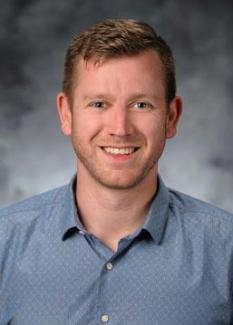
Specialization:
Biomedical Sciences; Biologically Inspired Chemistry & Physics; Energy, Catalysis & Green Chemistry; Structural Chemistry, Spectroscopy & Advanced Analysis; Inorganic & Organometallic; Physical Chemistry; Biochemistry & Biophysics.
Education:
Brandon received his B.S. in Chemistry at Washington State University in 2009 where he developed a profound interest in biochemistry and biophysics. He pursued a Ph.D. in Chemistry at Emory University studying abiotic-biotic interfaces for photocatalysis, the enzymatic mechanisms of hydrogenases, and proton-coupled electron transfer (PCET) dynamics at bioinorganic cofactors in the group of R. Brian Dyer. He then pursued postdoctoral studies at Harvard/Massachusetts Institute of Technology defining the targets of allosteric control and conformational gating that initiate long-range radical transfer during nucleotide metabolism by ribonucleotide reductase in the labs of Daniel G. Nocera (Harvard) and JoAnne Stubbe (MIT).
Research:
Greene Lab Website
Research Objective:
Publications:
Cáceres, J. C., Dolmatch, A., and Greene, B. L. The Mechanism of Inhibition of Pyruvate Formate Lyase by Methacrylate. In review.
Bailey, C. A. and Greene, B. L. A Fluorometric Assay for High-throughput Phosphite Quantitation in Biological and Environmental Matrices. Analyst 2023, 148, 3650-3658.
Cáceres, J. C., Bailey, C. A., Yokoyama, K., and Greene, B. L. Selenocysteine substitution in thiyl radical enzymes. Method. Enzymol. 2022, 662, 119−140.
Greene, B. L. Progress and opportunities in photochemical enzymology of oxidoreductases. ACS Catal. 2021, 11, 14635−14650.
Cui, C., Greene, B. L., Kang, G., Drennan, C. L., Stubbe, J., and Nocera, D. G. Gated Proton Release During Radical Transfer at the Subunit Interface of Ribonucleotide Reductase. J. Am. Chem. Soc. 2021, 143, 176−183.
Greene, B. L., Stubbe, J., and Nocera, D. G. Selenocysteine Substitution into a Class I Ribonucleotide Reductase. Biochemistry 2019, 58, 5074‒5084.
Greene, B. L., Stubbe, J., and Nocera, D. G. “Photochemical Rescue of a Conformationally Inactivated Ribonucleotide Reductase” J. Am. Chem. Soc. 2018, 140, 15744-15752.
Greene, B. L., Taguchi, A. T., Stubbe, J., and Nocera, D. G. “Conformationally Dynamic Radical Transfer within Ribonucleotide Reductase” J. Am. Chem. Soc. 2017, 140, 16657-16665.
Greene, B. L., Vansuch, G. E., Chica, B. C., Adams, M. W. W., and Dyer, R. B. “Applications of Photogating and Time Resolved Spectroscopy to Mechanistic Studies of Hydrogenases” Acc. Chem. Res. 2017, 50, 2718-2726.
Greene, B. L., Schut, G. J., Adams, M. W. W., and Dyer, R. B. “Pre-Steady-State Kinetics of Catalytic Intermediates of a [FeFe]-Hydrogenase” ACS Catal. 2017, 7, 2145-2150.
Greene, B. L., Vansuch, G. E., Wu, C. H., Adams, M. W. W., and Dyer, R. B. “Glutamate Gated Proton-coupled Electron Transfer Activity in a [NiFe]-Hydrogenase” J. Am. Chem. Soc. 2016, 138, 13013-13021.
Greene, B. L., Wu, C. H., Vansuch, G. E., Adams, M. W. W., and Dyer, R. B. “Proton Inventory and Dynamics in the Nia-S to Nia-C Transition of a [NiFe]-Hydrogenase” Biochemistry 2016, 55, 1813-1825.
Greene, B. L., Wu, C. H., McTernan, P. M., Adams, M. W. W., and Dyer, R. B. “Proton-coupled Electron Transfer Dynamics in the Catalytic Mechanism of a [NiFe]-Hydrogenase” J. Am. Chem. Soc. 2015, 137, 4558-4566.
Greene, B. L., Joseph, C. A., Maroney, M. J., and Dyer, R. B. “Direct Evidence of Active-site Reduction and Photodriven Catalysis in Sensitized Hydrogenase Assemblies” J. Am. Chem. Soc. 2012, 134, 11108-11111.